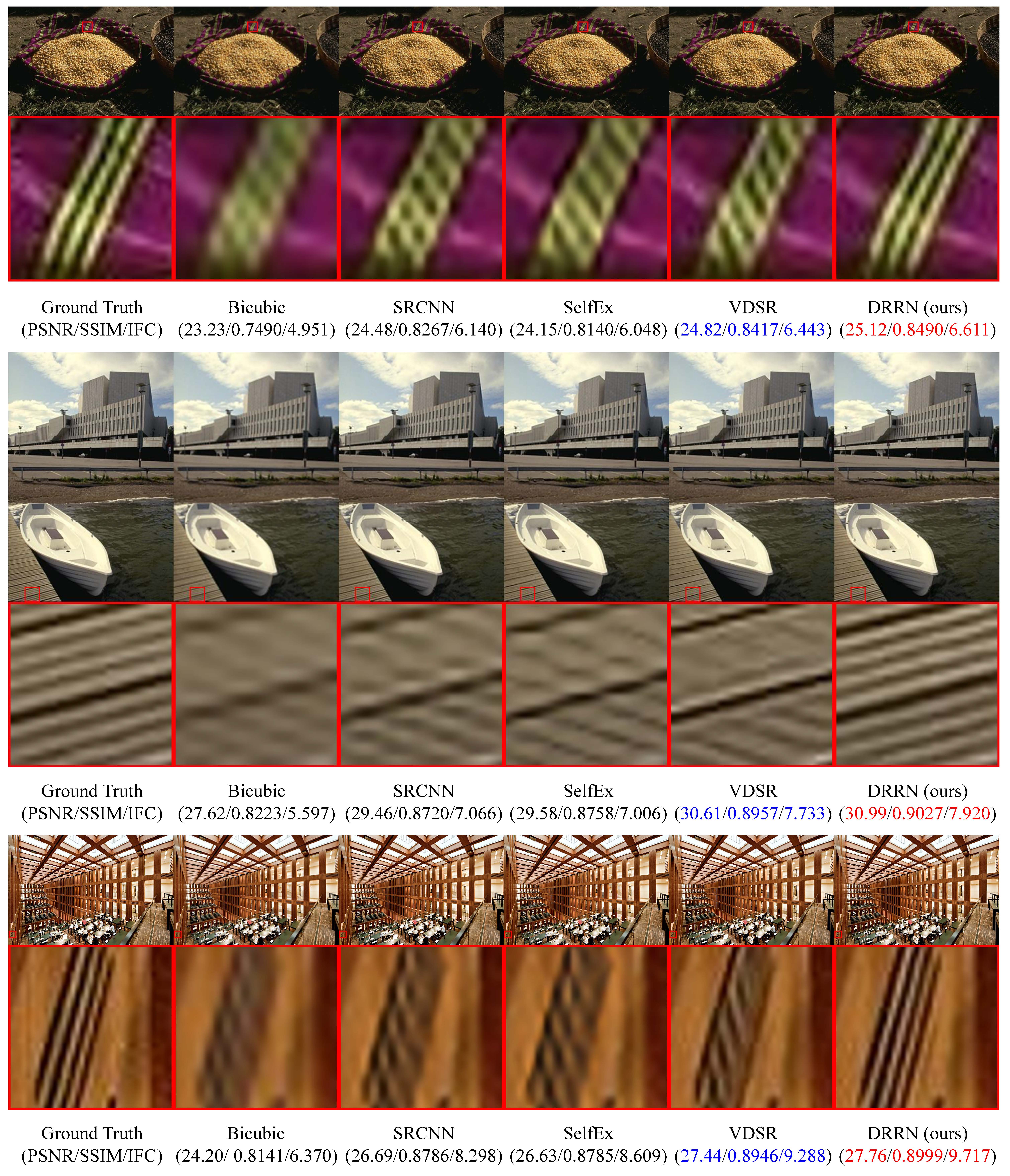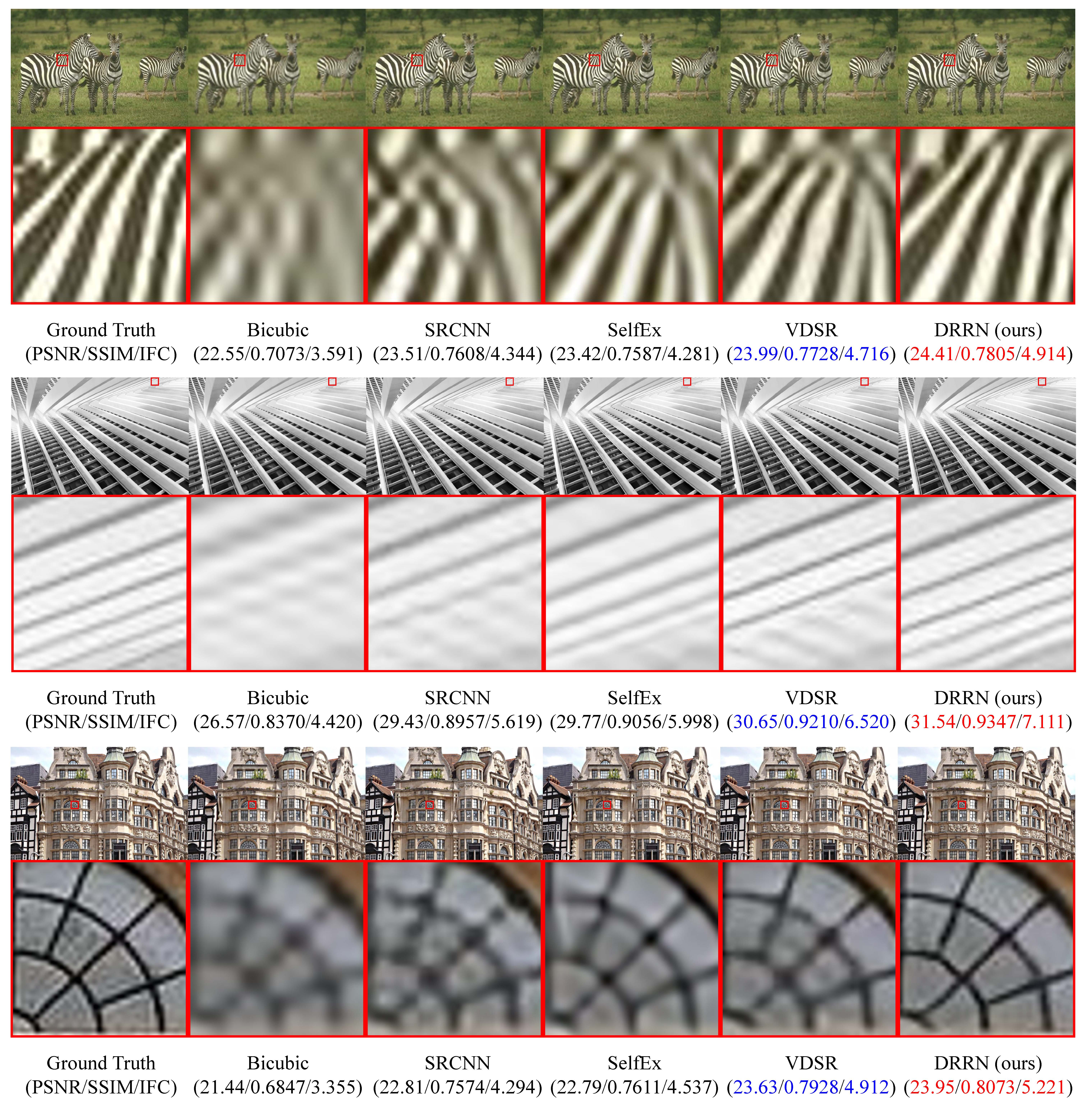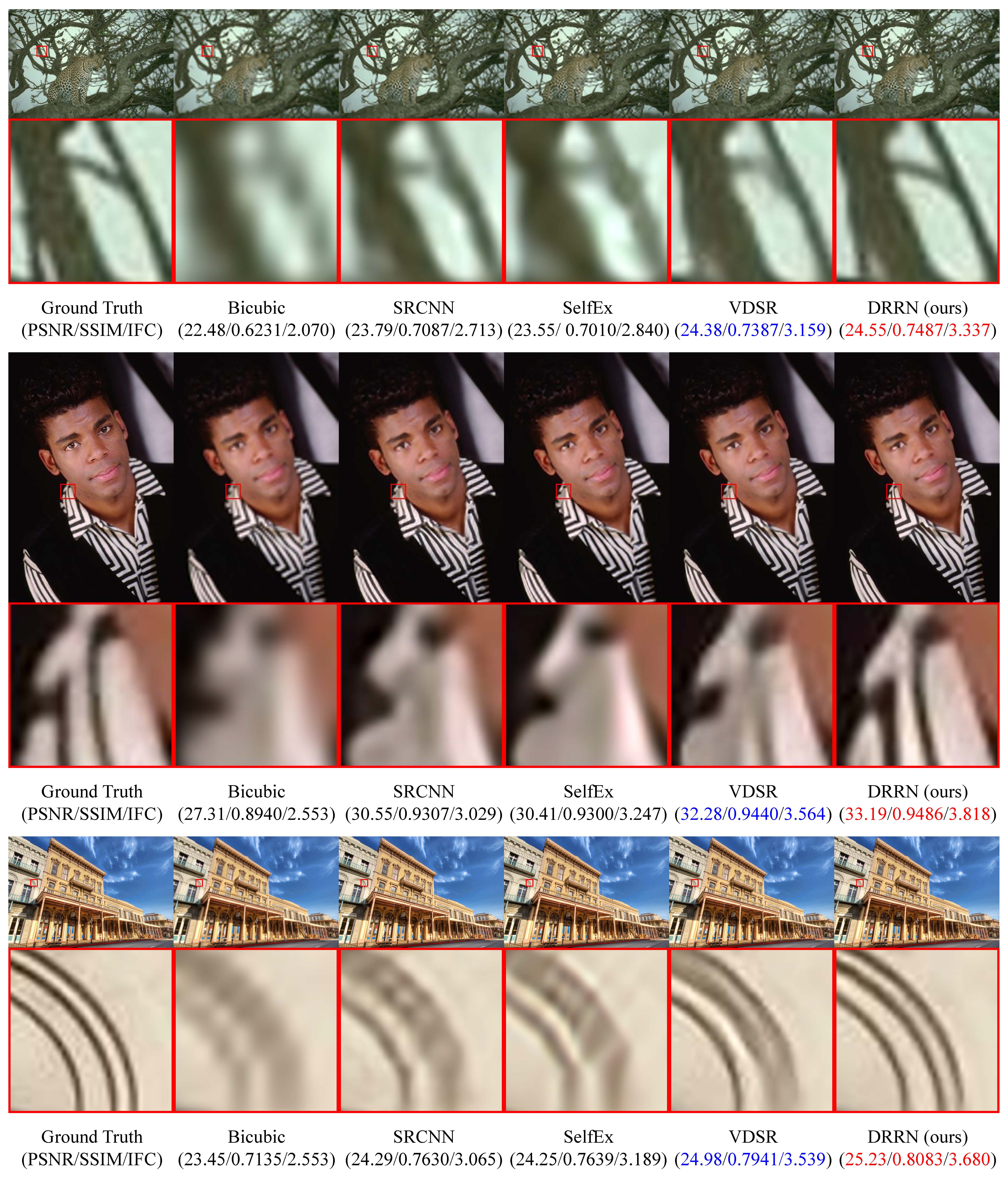If you find DRRN useful in your research, please consider citing:
@inproceedings{Tai-DRRN-2017,
title={Image Super-Resolution via Deep Recursive Residual Network},
author={Tai, Ying and Yang, Jian and Liu, Xiaoming },
booktitle={Proceedings of the IEEE Conference on Computer Vision and Pattern Recognition},
year={2017}
}
[DRRN-tensorflow] by LoSealL
[DRRN-pytorch] by yun_yang
[DRRN-pytorch] by yiyang7
modify sgd_solver.cpp in your_caffe_root/src/caffe/solvers/, where we add the following codes in funciton ClipGradients():
Dtype rate = GetLearningRate();
const Dtype clip_gradients = this->param_.clip_gradients()/rate;
- Preparing training/validation data using the files: generate_trainingset_x234/generate_testingset_x234 in "data" folder. "Train_291" folder contains 291 training images and "Set5" folder is a popular benchmark dataset.
- We release two DRRN architectures: DRRN_B1U9_20C128 and DRRN_B1U25_52C128 in "caffe_files" folder. Choose either one to do training. E.g., run ./train_DRRN_B1U9_20C128.sh
- Remember to compile the matlab wrapper: make matcaffe, since we use matlab to do testing.
- We release two pretrained models: DRRN_B1U9_20C128 and DRRN_B1U25_52C128 in "model" folder. Choose either one to do testing on benchmark Set5. E.g., run file ./test/DRRN_B1U9_20C128/test_DRRN_B1U9, the results are stored in "results" folder, with both reconstructed images and PSNR/SSIM/IFCs.


